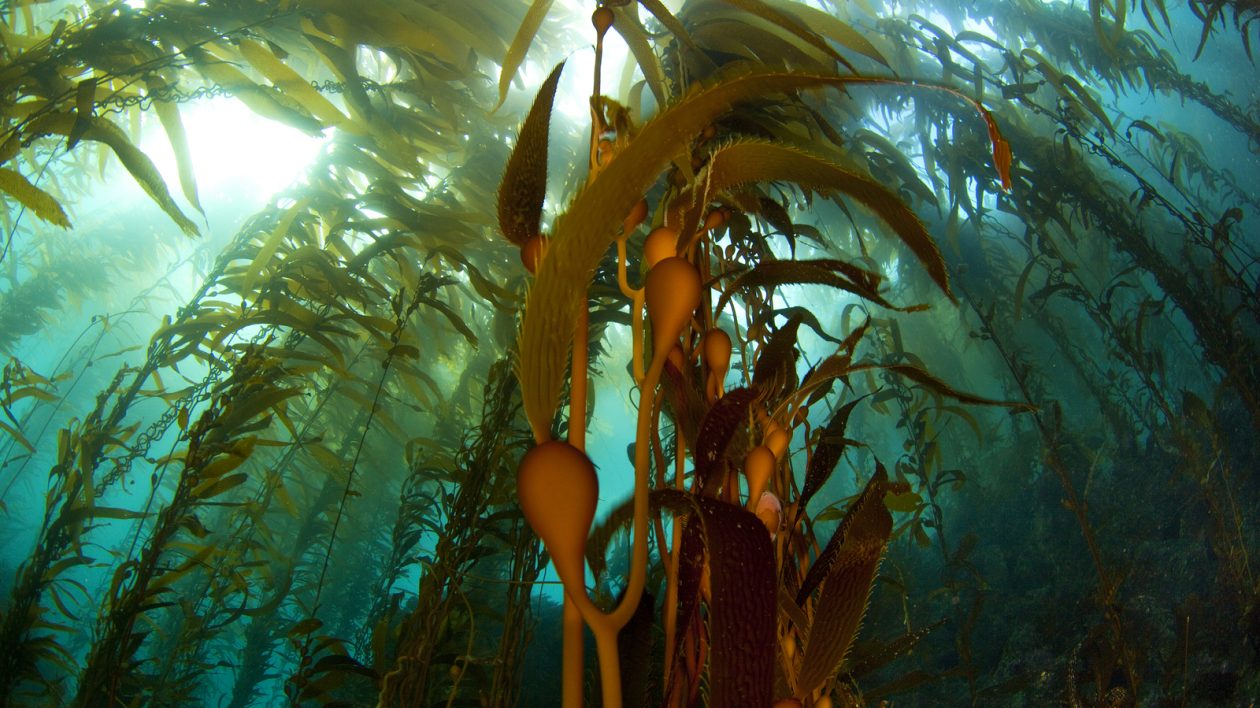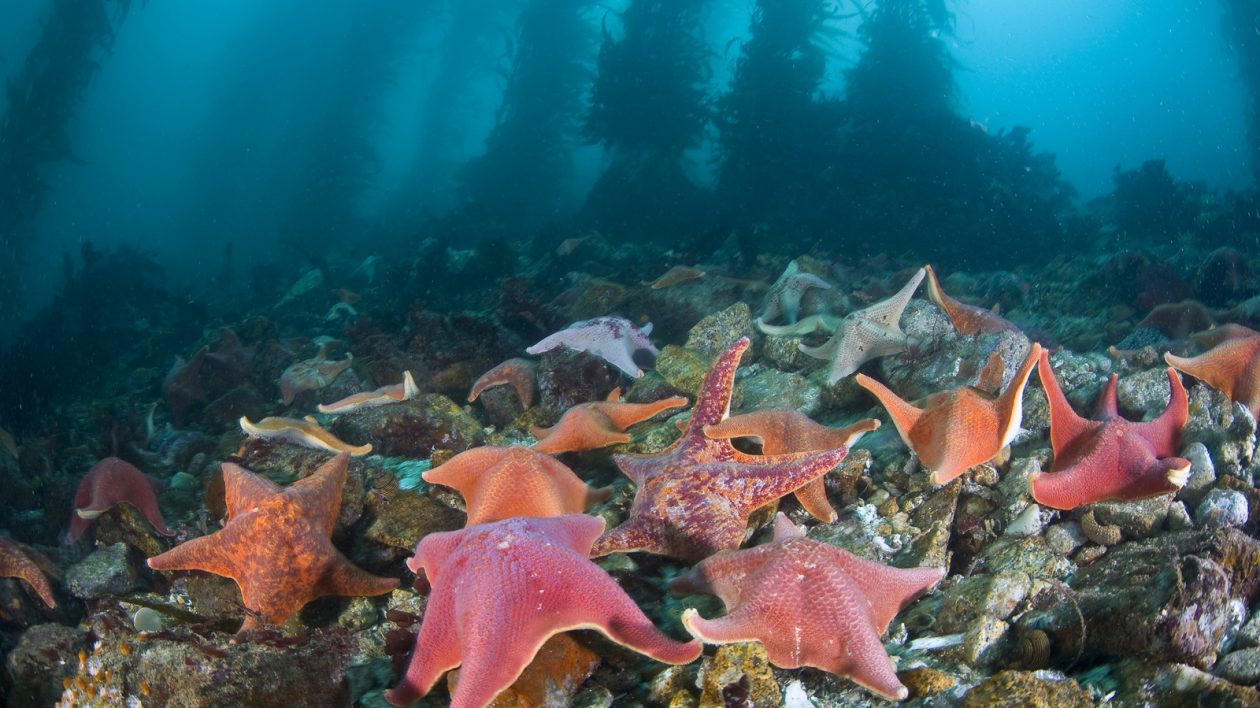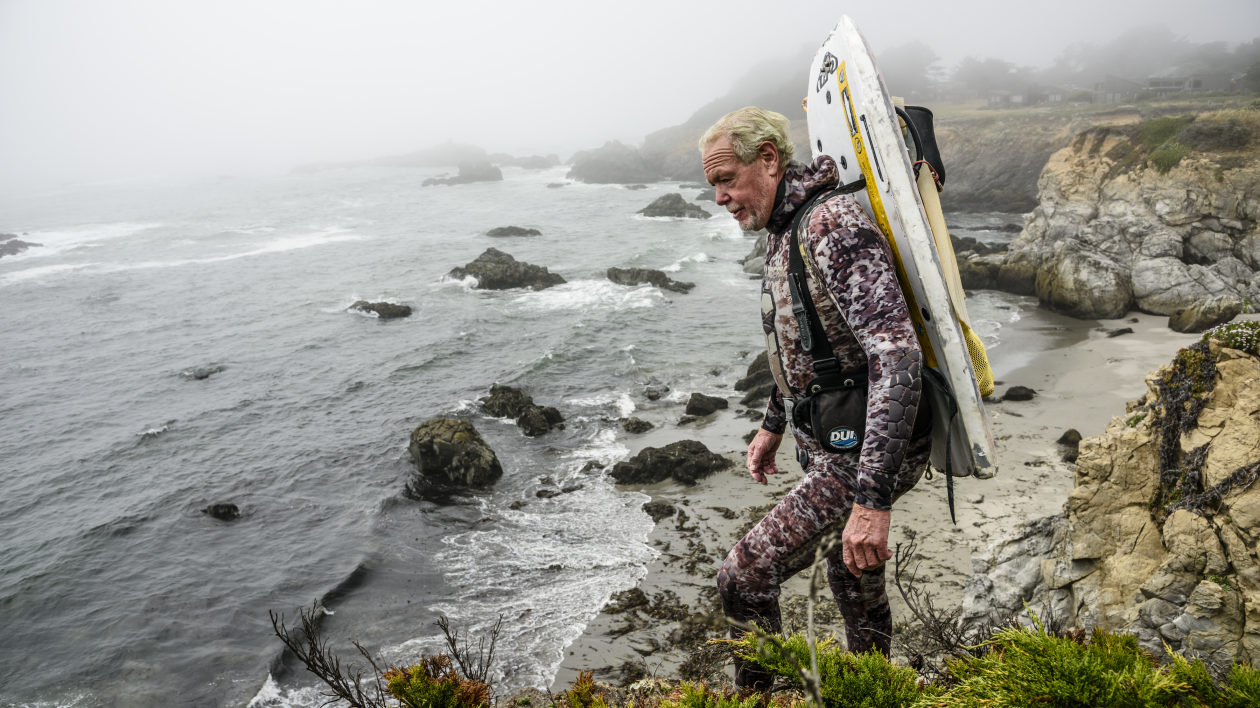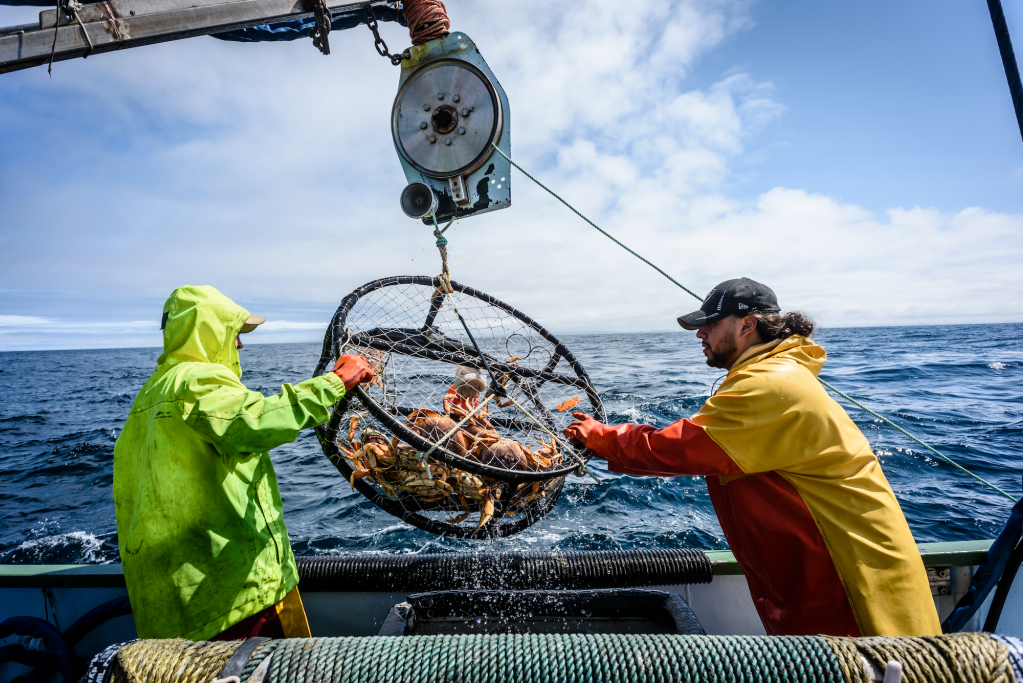Jack Likins, a recreational abalone diver, has never seen anything like it in his nearly 50 years of diving the chilly waters of northern California.
“Warm water and purple urchins are devastating kelp forests and changing the ecosystem,” says Likins.
Recent warming events have wreaked havoc on northern California’s underwater forests. The domino effects of this phenomena are many — a wasting disease associated with warm water has led to a severe decline in sea star populations, a main predator of sea urchins. In response, the purple sea urchin population has boomed. These urchins eat the kelp, which is also home to dozens of marine species and an important buffer of storm and wave activity on coastal shorelines. As a result, kelp forest habitat along the northern California coast has been decimated.
Kelp is also the primary food source for the prized red abalone — an ecologically important marine snail and the centerpiece of a significant recreational dive fishery. Concern over the loss of kelp and a relative lack of information on the health of the red abalone stock, prompted the California Fish and Game Commission to close the red abalone fishery in California in early 2018. As a result, nearly $40 million in economic activity for Northern California businesses was cut off.

The effects of a changing climate, such as that playing out in northern California, are impacting our oceans, communities, economies, and fisheries across the world.
For example, warming waters are causing many species to move into new management areas, creating novel challenges for scientists, managers, and fishermen. When waters become too warm for fish to tolerate, many commercially important species, like Atlantic cod, shift into cooler waters and cross jurisdictional boundaries. Unfortunately, the rules and regulations established to manage these fish stocks have not caught up to the fish.
Climate change is also leading to rising sea levels, acidification of seawater, and more frequent disease outbreaks. On the West Coast of the U.S., warming waters have been associated with toxic algae blooms. Algae proliferate in warm water; when the algae die, it settles on the seafloor, releasing toxins like domoic acid that are ingested by crabs and lobsters. If eaten by humans, these toxins can cause serious health issues. In California, the extremely valuable California Dungeness crab fishery was shut down for periods in 2015 and 2016 due to these public health threats, resulting in over $48 million in lost revenue.
Addressing challenges posed by a changing climate is going to require adaptive and responsive management systems. Permitting and data collection methodologies will need to be streamlined to adapt to these new realities.

But state and federal agencies may be ill-equipped to respond to these challenges to the extent necessary. State and federal fisheries agencies typically operate on slow regulatory timelines, under static budgets. They need additional resources, capacity and flexibility to meet fishery management needs in a changing ocean. The effects of climate change on our coastal ocean ecosystems are only going to get worse, exacerbating this issue.
For these reasons, our California Oceans Team at The Nature Conservancy recently convened a group of scientists and practitioners to develop solutions for managing fisheries in a changing climate. Our ideas are captured in a recent publication in the journal Conservation Letters. We propose a climate-ready fisheries approach centered around the concept of adaptive co-management.
This climate-ready fisheries approach involves collaborations between government, fishers, non-governmental organizations, the public, academia, and private companies in the management process. It empowers groups and individuals to have more responsibility in all aspects of management, from data collection to enforcement, to boost resources and capacity for adaptive decision-making.
Under our proposed climate-ready fisheries management system, agencies can more readily partner with organizations to expand capacity and improve the ability to respond to threats in a proactive manner. Partnering with industry and the private sector can spur innovation and the uptake of new ideas and technologies.

For example, in many fisheries, fishermen record their catch records on paper and submit those records to managers on a semi-regular basis. These records may sit in a box for months and even years until they’re entered into a database and analyzed. Partnering with the technology industry and fishermen has allowed our team to explore the use of digital, satellite, camera, and video monitoring methods to record fishery information and relay it in near real time to decision-makers.
In the red abalone fishery, we are partnering with software developers, recreational divers such as Jack Likins, and the non-profit organization Reef Check to empower citizen scientists to collect data on the health of the fishery and become involved in the management of their resource.
To date, we have worked with dozens of citizen scientists to collect thousands of data points from numerous locations using underwater survey methods and a computer vision technology called Poseidon. Partnering with university scientists, we have demonstrated how these measurements can be used to inform decisions on how many abalone can be harvested to maintain a sustainable fishery. The approach reduces the costs of data collection by 80% while increasing the frequency and areas of monitoring, so that a lack of information is no longer the bottleneck to effective decision-making.
Using new technologies and partnering with non-governmental organizations to enhance management comes with its challenges, such as the fear of misreporting of information. By establishing clear guidelines through a system of performance standards set by governments, many of these obstacles can be minimized – cameras don’t lie.
Organizations, including the fishing industry, can adopt new data collection technologies and demonstrate compliance with monitoring and enforcement requirements to benefit from the opportunity to sustainably harvest. Agencies can still retain authority in ensuring strict performance standards are met while simultaneously motivating a broader coalition of stakeholders to improve management systems and achieve sustainable fisheries.

Trialing new approaches to fisheries management can further our ability to overcome challenges associated with expanding management responsibility to non-governmental groups. For example, creating policy to allow for experimentation in state fisheries management that is analogous to the federal exempted fishing permit (EFP) process, could help scale the development of proactive, responsive management systems in a cost-effective manner.
I am excited by the prospect of fishers and motivated fishery stakeholders being more involved in fisheries management. Over the years, I have seen that collaborative fisheries efforts and co-management opportunities improve trust and transparency between all parties and foster a sense of stewardship in the long-term sustainability of ocean resources. Through co-management approaches backed by clear performance requirements, new technologies, and experimentation in fisheries management, I am hopeful that we can address the challenges of a changing climate, and maintain healthy, sustainable fisheries.




This a nothing article. No reasons cited, just scare the old folks and kids. “Climate ready management system?” What is it? Updating data collection with smart phones? That’s it? …performance standards set by governments?” Appears to me this is the problem. CDFG/DFW has had management of the abalone fishery for about 100 years. Now the abalone fisheries are closed statewide. Great job! Even though there are currently areas where red abalone are dying of old age, humans still cannot fish. However, sea otters continue to forage on red abalone down to 3 inches in size. They are currently consuming red abalone along the southern California mainland as they have done from Monterey to northern Santa Barbara Counties. Nothing said about that even though the US Congress passed a law, Public Law 99-625 in 1986 to allow for sea otters and continued shellfish fisheries. Another government agency, the US Fish and Wildlife Service has continued to break this law for the past 35 years. How about reporting all the facts, not just a selected few.
Great article presenting facts the CA Dept. Of Wildlife seems to insist on ignoring. I have had the privilege of spending a number of dives with the famous Jack Likins and anyone who knows him will tell you he is not only the consummate abalone diver but a gentleman and a scholar. Jack and the Nature Conservany got it right and until our California bureaucrats and scientists open their thinking to something they did not invent, we are going to continue to suffer the effects of marine fisheries declining while still clinging to the old management thinking that is not seeing the results they expect…
Don McMahan, diver, Outsourced VP of Sales and board member for the North Sonoma Coast Fire Protection District. (This is my personal opinion and not necessarily shared by any of the NSCFPD members, just my personal views)